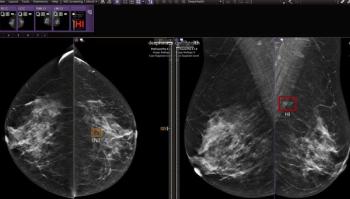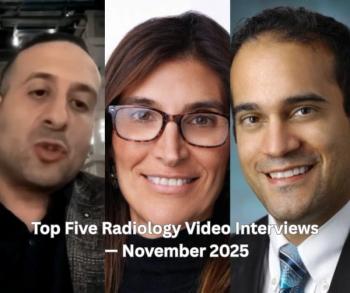
Even experts benefit from double reading
Even highly experienced radiologists can overlook cancers, a fact that bedevils breast imagers. Double reading has been shown to help inexperienced readers and increase cancer detection rates. It turns out that even old hands at mammography can also benefit from the practice.
Even highly experienced radiologists can overlook cancers, a fact that bedevils breast imagers. Double reading has been shown to help inexperienced readers and increase cancer detection rates. It turns out that even old hands at mammography can also benefit from the practice.
In a study presented Tuesday, Dr. Daniel Kopans at Massachusetts General Hospital reported a 2.5% increase in breast cancer detection among experienced breast imagers, with only a fractional increase in patient callbacks, after institution of a double reading system.
The retrospective study evaluated 183,585 screening mammograms from 59,047 women acquired between 1995 and 2004. A primary staff radiologist read the studies and marked abnormalities requiring additional evaluation. A second staff radiologist quickly reviewed the cases, looking for abnormalities missed by the first reader. Concern by either reader resulted in a patient callback.
On average, a first reader takes about 90 minutes to review 60 or so cases, Kopans said. A second reader can go through that many studies in about five minutes.
The average rate of callbacks by first-reader radiologists was 6.5%. And additional 0.27% of patients were recalled based on second-reader evaluations. The average for callbacks for both sets of readers rose to 6.8%.
The cancer detection rate of first readers was about 4.07%. Eighteen cancers were found by the second reader that were missed by the first reader, resulting in an average increased cancer detection rate of 2.5%.
"The use of double reading did increase our cancer detection rate but at the expense of increased callbacks," Kopans said. "It goes to show that even experienced radiologists overlook cancers. But there is no reimbursement for double reading in the U.S., and it is not the standard of care."
As a result, double reading programs need to be implemented in a cost-effective and efficient fashion, he said.
Newsletter
Stay at the forefront of radiology with the Diagnostic Imaging newsletter, delivering the latest news, clinical insights, and imaging advancements for today’s radiologists.



























